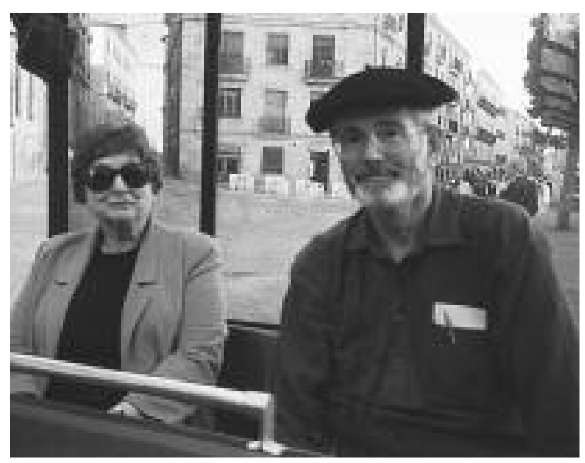(1928- ) American Stratigrapher (Tectonics)
There is a division between pure geologic research and applied geologic research in that one is purely for the sake of knowledge and the other for a practical application. However, at certain times, applied research can drive the pure research. During the oil and gas crises of the 1970s, there was a tremendous effort to find alternative energy sources to petroleum. Although trained in classical geology, Lynn Glover III became an expert in balancing pure and applied geology to help with this search for alternative energy. This expertise was shown in his ability to obtain grants and contracts for applied energy research while still performing significant pure research within those guidelines. Between 1974 and 1992, he organized several collaborators and obtained nearly $12 million in funding from the U.S. Department of Energy, the U.S. Nuclear Regulatory Commission, U.S. Geological Survey, and the National Science Foundation.
One project was to explore the geothermal potential of the granite plutons of the southeastern United States. Because granite is enriched in radioactive elements, it has an elevated heat flow. It is considered a “hot dry rock” in geothermal energy terms. By circulating water through deep wells, it can be heated enough to heat homes in the winter. The project involved drilling and coring numerous granite plutons, heat flow measurements, and analysis of radioactivity. There was more pure science done on the huge number of granites in the southeast in a short period of time than in all of the rest of the years of research combined. A successful well was drilled in the Atlantic Coastal Plain at Chrisfield, Maryland. This well would save much energy required by heat-pump technology to serve hospitals, apartment complexes, and commercial buildings.
Another project was to evaluate current earthquake activity in several areas where nuclear power plants are located or may be located in the future. The project involved detailed field mapping of these areas to identify the faults and possible surface expressions of them. Coupled with the fieldwork was seismic reflection profiling, similar to that which is used for petroleum exploration. A 20-ton truck is lifted on a pad, which then shakes, sending vibrations into the ground. Seismographs receive these vibrations after they have bounced off underground rock layers. The process is like a sonogram (ultrasound) of the subsurface geology. Such a seismic reflection profile was made all the way across the Appalachians in central Virginia similar to the COCORP profile farther south.
Although he participated in applied research, Lynn Glover’s real passion is in the tectonics of the central and southern Appalachians.
However, unlike many researchers who jump on bandwagons of current popular ideas, Lynn Glover deals only with the geology rather than the models of others. His retirement symposium, sponsored by his former students, was entitled, “Renegade Tectonic Models and other Geologic Heresies . . .” because he was well known for strongly standing by his views. He proposed relatively straightforward plate reconstructions based on available data and steadfastly avoided the constant bombardment from people trying to apply the newest tectonic ideas to the southern Appalachians. He is well known for his willingness to battle out ideas with fellow researchers. Such an exchange of ideas forms a series of checks and balances for the science. A volume to summarize his contributions to Appalachian geology is entitled, Central and Southern Appalachian Sutures: Results of the EDGE Project and Related Studies.
Lynn Glover was born on November 29, 1928, in Washington, D.C. He spent most of his youth in Occoquan, Virginia, but moved around during World War II because his father was in the U.S. Navy. He earned his bachelor of science and master of science from Virginia Polytechnic Institute in 1952 and 1953, respectively. He was employed as a geologist for the U.S. Geological Survey from 1952 to 1967. He worked as a uranium exploration geologist in the southern Appalachians as well as a field geologist in Puerto Rico and the eastern Greater Antilles. He earned his Ph.D. from Princeton University, New Jersey, in 1967 as an advisee of harry h. hess. He joined the faculty at Virginia Polytechnic Institute and State University in 1967, and remained there throughout the rest of his career. During that time he served as director of the Orogenic Studies Laboratory. He retired in 1998, and became an emeritus professor. Since his retirement he has developed and chaired an alumni relations committee for the department. Lynn Glover is married to Ellen Glover, to whom he credits most of his accomplishments.
Lynn Glover III in Spain with his wife, Ellen Glover
Lynn Glover has had a very productive career. In addition to his success with grants, he is an author of 43 articles in international journals and professional volumes. He edited seven volumes and guidebooks and wrote one monograph. Because of the unconventional nature of his work, he also produced 16 reports and maps. Glover has also performed service to the profession and especially to the Geological Society of America for which he was associate editor of the Geological Society of America Bulletin from 1988 to 1996, vice president of the Southeast Section (1994), and chair of the Southeast Section meeting in 1994, among others.

